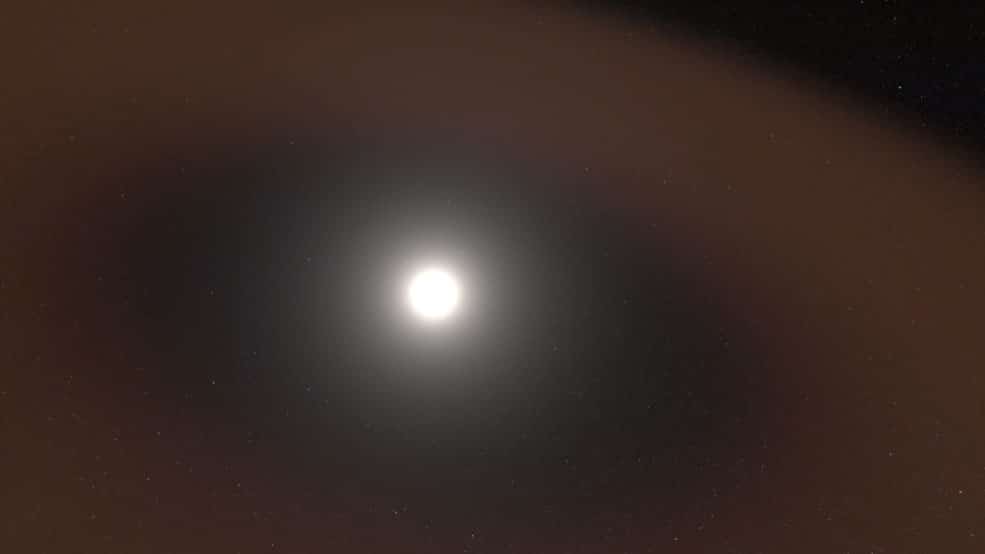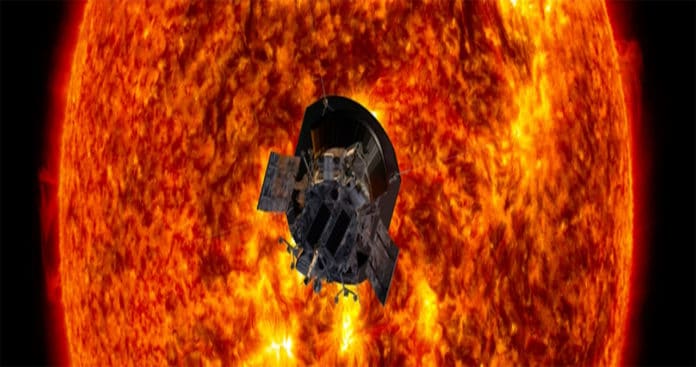On Sunday, Aug. 12, at 3:31 a.m. EDT (0731 GMT), humanity’s first mission: Touch the Sun, with Parker Solar Probe, took off for the journey of studying sun’s surface. Performing as designed, the probe has completed three of the 24 planned approach to the Sun.
On Dec. 4, 2019, four new papers in the journal Nature describe what scientists have learned from this unprecedented exploration of our star — and what they look forward to learning next.
These discoveries uncover new data about the behavior of the material and particles that dash away from the Sun, bringing scientists closer to answering crucial inquiries about the physics of our star. Moreover, the information Parker has uncovered about how the Sun constantly ejects material and energy will help scientists re-write the models we use to understand and predict the space weather around our planet and understand the process by which stars are created and evolve.
Thomas Zurbuchen, an associate administrator for science at NASA Headquarters in Washington, said, “This first data from Parker reveals our star, the Sun, in new and surprising ways. Observing the Sun up close rather than from a much greater distance is giving us an unprecedented view into important solar phenomena and how they affect us on Earth and gives us new insights relevant to the understanding of active stars across galaxies. It’s just the beginning of an incredibly exciting time for heliophysics with Parker at the vanguard of discoveries.”
The dynamic solar wind
The solar wind is a stream of energized, charged particles, primarily electrons, and protons, flowing outward from the Sun, through the solar system. Made of plasma, the solar wind flows at speeds as high as 900 km/s and a temperature of 1 million degrees (Celsius).
Closer to the solar wind’s source, Parker Solar Probe saw a much different picture: a complicated, active system.
Stuart Bale, the University of California, Berkeley, lead for Parker Solar Probe’s FIELDS instrument suite, said, “The complexity was mind-blowing when we first started looking at the data. Now, I’ve gotten used to it. But when I show colleagues for the first time, they’re just blown away. From Parker’s vantage point 15 million miles from the Sun, Bale explained, the solar wind is much more impulsive and unstable than what we see near Earth.”
When the FIELD instrument surveyed he state of the solar wind by measuring and carefully analyzing how the electric and magnetic fields around the spacecraft changed over time, the data suggests that there are quick reversals in the magnetic field and sudden, faster-moving jets of material. These are the characteristics of the solar wind that makes it more turbulent.

Credits: NASA’s Goddard Space Flight Center/Conceptual Image Lab/Adriana Manrique Gutierrez
These reversals — dubbed “switchbacks” — last anywhere from a few seconds to several minutes as they flow over Parker Solar Probe. During a switchback, the magnetic field whips back on itself until it is pointed almost directly again at the Sun.
Although, the exact source of the switchbacks is yet to be understood. In the solar wind, the electrons always flow strictly along the shape of the field lines moving out from the Sun, regardless of whether the north pole of the magnetic field in that particular region is pointing towards or away from the Sun.
Measurements from the Parker Solar Probe suggests that this flow of electrons going in the opposite direction, flipping back towards the Sun — showing that the magnetic field itself must be bending back towards the Sun, rather than Parker Solar Probe merely encountering a different magnetic field line from the Sun that points in the opposite direction. It means, the switchbacks are kinks in the magnetic field — localized disturbances traveling away from the Sun.
The Switchback observations also show that these events will grow even more common as the spacecraft gets closer to the Sun.
How, exactly, the solar wind flows out from the Sun?
In near-Earth space, the slow solar wind is observed to have a velocity of 300–500 km/s, a temperature of ~105 K, and a composition that is a close match to the corona.
The solar wind flows radially near the Earth. Means, it is streaming directly from the Sun, straight out in all directions. With the rotation of the sun as it emits solar wind, the solar wind was spinning along with it.
This suggests, the atmosphere rotates with the Sun; however, the more distant you go from the center, the quicker you are moving in space.
There’s some point between the Sun and Earth, the solar wind transitions from rotating along with the Sun to flowing directly outwards, or radially. Understanding solar wind transitions from a rotational flow to a perfectly radial flow has implications for how the Sun sheds energy. Finding that point may give a better understanding of the lifecycle of other stars or the formation of protoplanetary disks, the dense disks of gas and dust around young stars that eventually coalesce into planets.
Instead of observing it from Earth, Parker Solar Probe observed the solar wind while it was still rotating. The probe has detected the rotation of solar wind from more than 20 million miles from the Sun. What’s more, the rotation seems to increased as it approached its perihelion point. The strength of the circulation was stronger than many scientists had predicted. Still, it also transitioned more quickly than predicted to an outward flow, which is what helps mask these effects from where we usually sit, about 93 million miles from the Sun.
Dust Near The Sun
The primary sources of the dust population in the inner solar system are comets and asteroids, but the relative contributions of these sources are not quantified.
Parker Solar Probe’s imagers saw the cosmic dust begin to thin out. The instrument looks out the side of the spacecraft, it can see wide swaths of the corona and solar wind, including regions closer to the Sun. The images show starting to thin a little over 7 million miles from the Sun.

Russ Howard, a principal investigator for the WISPR suite, said, “This dust-free zone was predicted decades ago, but has never been seen before. We are now seeing what’s happening to the dust near the Sun.”
Putting space weather under a microscope
Quantifications by Parker Solar Probe have offered a whole new view on two types of space weather events: energetic particle storms and coronal mass ejections.
Solar Energetic Particles created by solar flares are known to be the main sources of major geomagnetic storms. These particles are often accelerated by the coronal mass ejections- driven shocks.

Carrying a lot of energy, these particles can even damage the spacecraft electronics and also endanger astronauts. Understanding how these particles are accelerated is crucial. By whipping around the Sun at just a few million miles away, Parker Solar Probe can measure these particles just after they’ve left the Sun, shedding new light on how they are released.
Scientists have measured several never-before-seen energetic particle events- These instruments have also measured a rare type of particle burst with an unusually high number of heavier elements— suggesting that both types of events may be more common than scientists previously thought.
David McComas, principal investigator for the Integrated Science Investigation of the Sun suite, or ISʘIS said, “It’s amazing – even at minimum solar conditions, the Sun produces many more tiny energetic particle events than we ever thought. These measurements will help us unravel the sources, acceleration, and transport of solar energetic particles and ultimately better protect satellites and astronauts in the future.”
The outcomes revealed unprecedented detail on structures in the corona and solar wind — including coronal mass ejections, billion-ton clouds of solar material that the Sun sends hurtling out into the solar system.
Howard said, “Since Parker Solar Probe was matching the Sun’s rotation, we could watch the outflow of material for days and see the evolution of structures. Observations near Earth have made us think that fine structures in the corona segue into a smooth flow, and we’re finding out that’s not true. This will help us do better modeling of how events travel between the Sun and Earth.”
